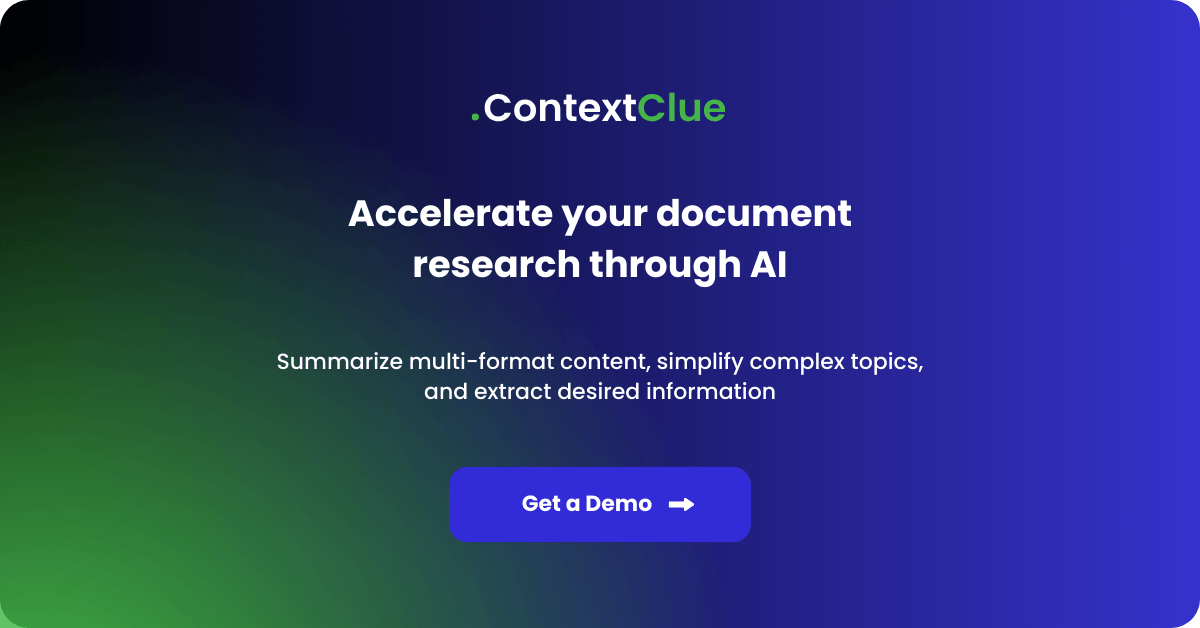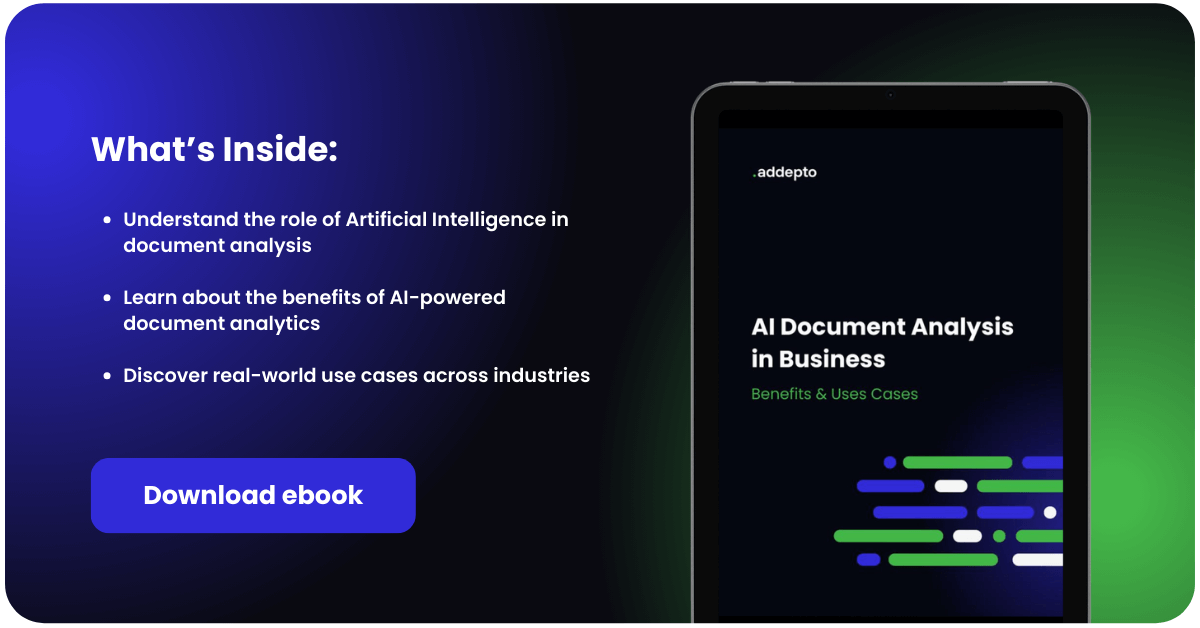
February 22, 2023
GPT-4 vs GPT-3: Main Differences
Author:

CSO & Co-Founder
Reading time:
12 minutes
The Natural Language Processing market is predicted to reach upwards of $43 billion by 2025. [1] This comes as no surprise considering the numerous use cases of NLP models and their potential to revolutionize how we live and do business.
One of the most popular and robust language models in the market today is GPT-3. With over 175 billion parameters, GPT-3 was the largest language model available, with use cases ranging from customer service to fraud detection. [2] But now, there’s a new player in town, and it looks like it might give GPT-3 a run for its money.
GPT-4 is larger than its predecessor and is expected to be able to perform more complex operations. But what is it, exactly, and how does it differ from GPT-3? This article will explore the key differences between GPT-3 and GPT-4 and the possible impact the former may have on business.
Discover a new era of document analysis excellence with Addepto’s AI Text Analysis Tool.
What is GPT-4?
Before we get to GPT-4 vs GPT-3, it is important to define what GPT is in the first place. GPT, short for Generative Pre-Trained Transformer, is a text-based AI model trained on massive amounts of data available on the internet.
The natural language processing model is designed to generate human-like text based on input. This makes it suitable for a wide variety of applications, ranging from answering questions, translation, text summarization, code generation, and classification.
Like with other NLP models, GPT relies on a wide abundance of parameters to make predictions. [3] Since 2018, OpenAI, the company responsible for producing GPT, has made four alliterations of the language model, with GPT-4 as their latest release.
GPT-1 had 117 million parameters, which was closely followed by GPT-2 with 1.2 billion parameters. Things took an upturn with GPT-3, which raised the number of parameters to 175 billion parameters, making it the largest natural language processing model for some time.
OpenAI’s latest release will have about 100 trillion parameters, making it up to 100 times more powerful than its predecessor. To put this in more perspective, GPT-4 will have almost as many parameters as there are neural connections in the human brain. [4]
- GPT-4, the latest advancement in OpenAI’s language model technology, stands out with its nearly trillion parameters.
- GPT-4, with its enhanced capabilities, is expected to revolutionize various fields.
- GPT-4’s ability to understand and generate human-like text is a significant upgrade from GPT-3.
- GPT-4’s increased parameter count implies a deeper comprehension of complex language nuances.
- GPT-4 is not just an incremental update; it’s a major leap forward.
- GPT-4 promises improvements in accuracy, performance, and application versatility.
- GPT-4’s advanced algorithms are designed for more effective language processing.
- GPT-4 sets new standards in AI’s ability to mimic human communication.
- GPT-4 is a transformative step in natural language processing technology.
It might be also interesting for you: GPT-3 vs. ChatGPT. The Key Differences
What can GPT-4 be used for?
Like its previous alliterations, GPT-4 will have a lot of applications spanning various fields, including content creation, marketing, and software development. Here are some ways you can use the language model:

Text generation
As a language model, it can generate human-like text in various contexts, including articles, poetry, marketing emails, and much more. All you need is a good prompt to boot, and the model will generate literally anything you can think of.
Answering questions
Google processes an average of 40,000 queries per second, which translates to 3.5 billion queries a day. [5] Unfortunately, some of these questions go unanswered since, as a search engine, Google can only generate results linked to the keywords you type. You also have to go through several websites to get the answer you’re looking for.
The language model streamlines search queries by answering the questions directly. Regardless of the complexity of your question, the model can provide precise answers with detailed explanations. This feature can vastly improve customer service and technical support when applied in business.
Machine translation
There are tons of specialized language translation software out there, but some of them aren’t very accurate. Since the model is trained on large datasets of already translated materials, it can make more precise translations. It also takes things up a notch by simplifying complex subjects into easily understandable outputs. For instance, GPT can translate legal jargon into an easily understandable context.
App creation
The average time it takes to develop an app, including the design and development stages, is about 7 to 12 months. [6] GPT can easily generate the code involved in app development with just a simple description of what the developer hopes to achieve.
Difference between GPT-3 and GPT-4
According to OpenAI, GPT-4 will offer a huge performance leap over its predecessor, including improvements in human-like text generation, language translation, summarization, and other language and code generation tasks in a more versatile and adaptable manner.
Additionally, GPT-4 benefits from Reinforcement Learning from Human Feedback (RELF) algorithms, reducing susceptibility to misinformation and biased content. A notable improvement in GPT-4 is its reduced dependency on specific prompting, offering users more flexibility in expressing their intent and ensuring a better understanding by the model. This evolution from GPT-3 to GPT-4 illustrates a significant stride in the capabilities of language models, promising more efficient and versatile applications in various fields.
GPT-4 vs GPT-3: Parameters
Despite all its capabilities, GPT-3 has only 175 billion parameters. This is still a lot considering most natural language models today don’t even have half as many parameters.
According to OpenAI, the company developing GPT-4, the language model will have almost a trillion parameters, making it significantly larger than its counterpart. This massive increase in parameters is not just a quantitative change but a qualitative one as well. With a higher parameter count, GPT-4 can process and understand a wider array of complex language structures, enabling it to produce more accurate and nuanced responses. This capability is expected to enhance its performance in tasks such as language translation, creative writing, and technical coding, where context and subtlety are crucial.
Moreover, this parameter expansion could potentially lead to faster processing speeds, allowing GPT-4 to handle more requests simultaneously and deliver responses more rapidly. This evolution in parameter scale reflects the ongoing efforts to bridge the gap between artificial intelligence and human-like understanding of language, pushing the boundaries of what AI can achieve in natural language processing.

GPT-4 vs GPT-3: Performance
GPT-4 is one of the best-performing language models on the market. It can generate human-like text with simple prompts, complete code, and even create interesting articles, stories, and poems. However, the language model has proven ineffective in understanding certain phrases like idiomatic expressions and sarcasm.
The mere fact that GPT-4 has more parameters means that it may have significantly higher performance capabilities than its predecessor. It should be able to perform more intricate tasks, understand things like sarcasm and idiomatic expressions, and overcome some other limitations of older GPT models.

With its advanced algorithms, GPT-4 is poised to offer a deeper understanding of context, tone, and nuances in language, enabling more accurate and empathetic interactions. This could lead to groundbreaking improvements in fields like automated customer service, content creation, and even complex problem-solving scenarios where nuanced understanding and creativity are essential. This shift signifies a step closer to achieving AI that can seamlessly interact and respond in a more human-like manner, bridging the gap between machine processing and human communication.
GPT-4 vs GPT-3: Potential applications
Since its release, GPT-3 has been utilized in a variety of areas including content generation, chatbots, and research in the NLP and machine learning fields. GPT-4, being larger and more efficient, is expected to expand these applications significantly. Beyond text and code generation, and creative writing, GPT-4 could revolutionize fields like personalized education, where its enhanced understanding could tailor learning materials to individual students. In healthcare, it might assist in processing medical records or even suggesting diagnoses and treatments, given its advanced understanding of complex data.
Additionally, GPT-4 could make significant strides in the world of entertainment, offering more nuanced and complex story generation for games and interactive media. Its capability to understand and generate multiple languages might also pave the way for more sophisticated translation services. Essentially, GPT-4’s potential applications span far and wide, potentially transforming industries by overcoming limitations previously encountered with GPT-3.
GPT-4 vs GPT-3: Accuracy
The higher number of parameters in GPT-4, coupled with the developers’ refined experience from previous GPT models, positions it to be markedly more accurate than its predecessors. These advancements are expected to greatly enhance the model’s ability to mimic human behavior and speech patterns, particularly in response to nuanced input prompts. This elevated level of optimization in GPT-4 not only promises improved mimicry of human conversation but also a deeper understanding of context, subtleties, and varied language styles.
This will likely lead to a significant reduction in errors and misunderstandings, enabling the model to provide more relevant and contextually appropriate responses.

Consequently, GPT-4’s enhanced accuracy is poised to set new standards in natural language processing, offering a more seamless and intuitive interaction between AI and human users.
GPT-4 vs GPT-3: Susceptibility to misinformation
One of the biggest challenges facing NLP models is inaccurate training data, which ultimately makes them susceptible to providing misinformation.
OpenAI employs Reinforcement Learning from Human Feedback (RELF) algorithms to curb this issue. [7] Human trainers use this algorithm to fine-tune AI-powered NMLP models through supervised fine-tuning.
This approach enables the models to not only reduce their susceptibility to misinformation but also mitigate the generation of toxic or biased content. Additionally, this method helps in refining the model’s understanding of nuanced and complex concepts, leading to more reliable and trustworthy outputs. The integration of human feedback in the learning process ensures that the model continuously evolves and adapts, enhancing its ability to discern factual accuracy and context relevance in its responses.
GPT-4 vs GPT-3: Less dependence on good prompting
If you have previous experience using the 3rd generation GPT, then you understand how important good prompting is. If you don’t use the right prompt, the result might be unsatisfactory. The model might even provide an unrelated answer.
One of the users’ biggest expectations with the new model is that it will be less dependent on good prompting, thus giving them more freedom in formulating their intent and confidence that the language model will understand them.
OpenAI has had previous success in developing language models that can understand user intent. One of the company’s most notable releases is ChatGPT, which is pretty good at deciphering intent. Besides ChatGPT, the company also invested in InstructGPT, which is pretty effective in generating human-like text in a clear, concise, and easy-to-follow manner.
Read more about the best NLP GPT alternatives worth looking into
How will GPT-4 affect businesses?
GPT-4 is set to be a game-changer in the business world. Building on the capabilities of earlier GPT models, it is poised to significantly enhance various aspects of business operations. In customer service, GPT-4 can provide more intuitive and human-like interactions, improving customer satisfaction and engagement. For sales and marketing, it can offer sophisticated content generation and data analysis, enabling more targeted and effective strategies. In content creation and management, GPT-4’s advanced language processing can streamline these tasks, boosting efficiency and creativity.
Additionally, its potential in business process automation is vast. It can automate routine tasks, analyze large volumes of data, and even assist in decision-making processes by providing insights and predictions based on company data. This could lead to more informed decision-making, helping businesses stay ahead in competitive markets.
Moreover, GPT-4’s advanced language and analytical capabilities could be instrumental in research and development, helping businesses innovate and develop new products and services. It might also play a crucial role in training and development, offering personalized learning experiences for employees.
In the realm of financial analysis and forecasting, GPT-4 could provide deeper insights into market trends and consumer behavior, enabling more accurate forecasting and risk assessment.
Overall, GPT-4’s impact on businesses is expected to be profound, offering improvements in efficiency, customer experience, innovation, and decision-making, thus providing companies with a significant competitive edge.
Wrapping up
GPT-4 is poised to revolutionize the business landscape as well as some aspects of daily life, such as finding answers and translating language. The language model may also be faster and more accurate than its predecessors, thus improving its potential use cases tremendously. That said, OpenAI keeps most of the information regarding the model’s development under wraps, so most information out there is mere speculation.
In addition to GPT-4, there are many other exciting advancements happening in the field of Generative AI development, from improved image and video generation to virtual assistants that can hold natural conversations with humans. As these technologies become more advanced, they have the potential to transform industries and create new opportunities for businesses.
References
[1] Statistica.com. Worldwide NLP Market Revenues. URL: https://www.statista.com/statistics/607891/worldwide-natural-language-processing-market-revenues/. Accessed February 21, 2023
[2] Techtarget.com. What is GPT. URL: https://bit.ly/3lQHmOB. Accessed February 21, 2023
[3] Towardsdatascience.com. Parameters and hyperparameters. URL: https://towardsdatascience.com/parameters-and-hyperparameters-aa609601a9ac. Accessed February 21, 2023
[4] Scientificamerican.com. 100 Trillion Connections. URL: https://www.scientificamerican.com/article/100-trillion-connections/. Accessed February 21, 2023
[5] Internetliveststs.com. Google Search Statistics. URL: https://www.internetlivestats.com/google-search-statistics/. Accessed February 21, 2023
[6] Uptech.team. How long does it take to make an app. URL: https://bit.ly/3KxWF9g. Accessed February 22, 2023
[7] Openai.com. Learning to Summarize With human Feedback. URL: https://openai.com/blog/learning-to-summarize-with-human-feedback/. Accessed February 22, 2023
Category:







